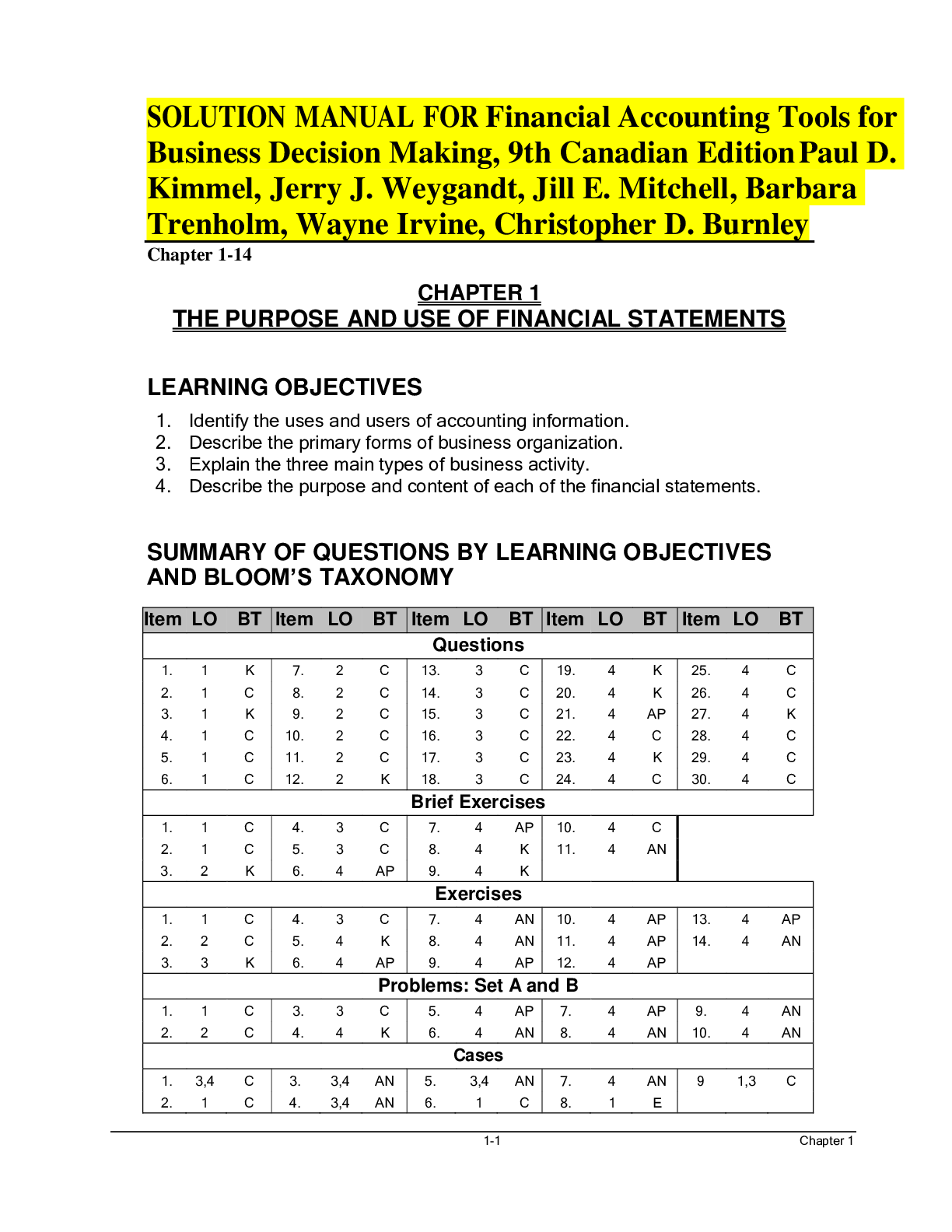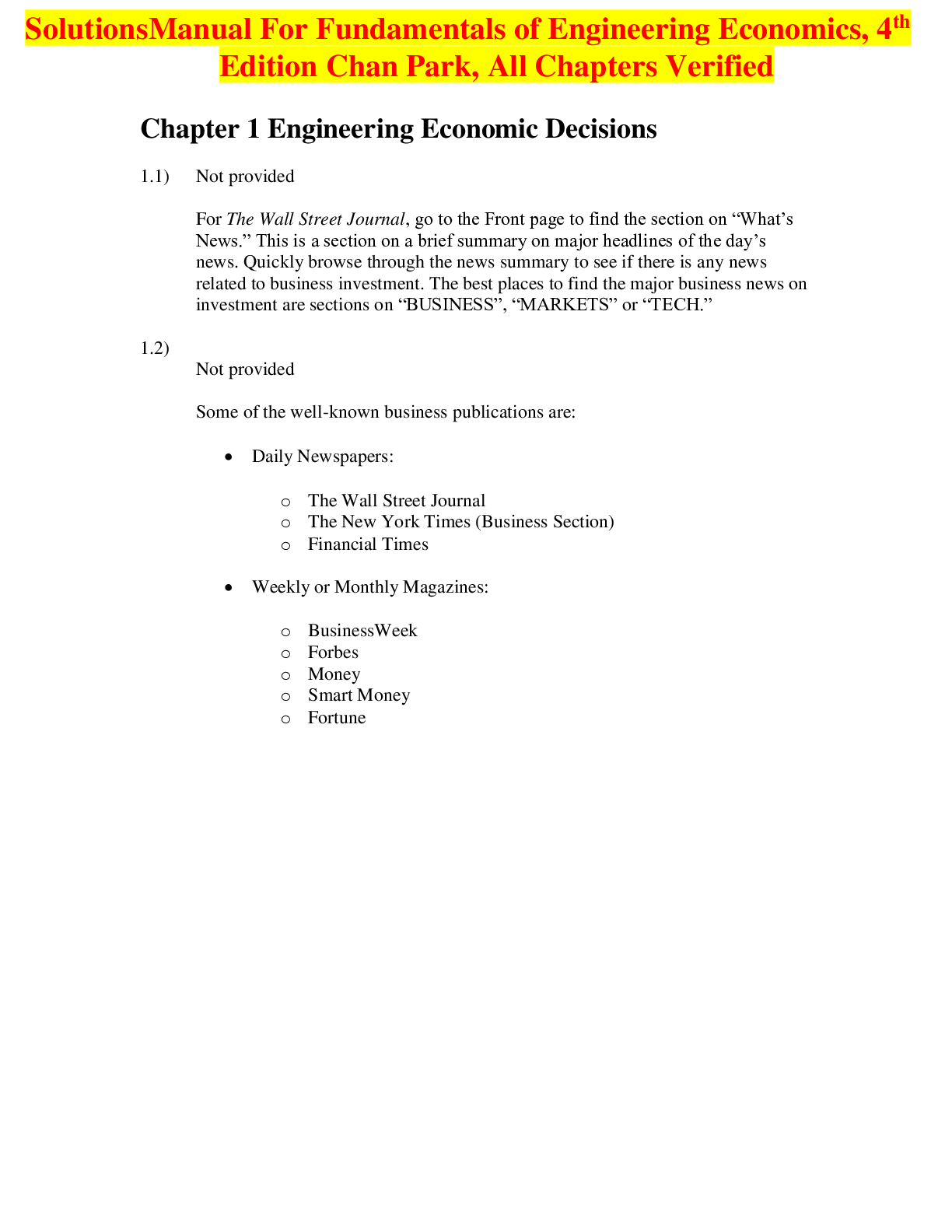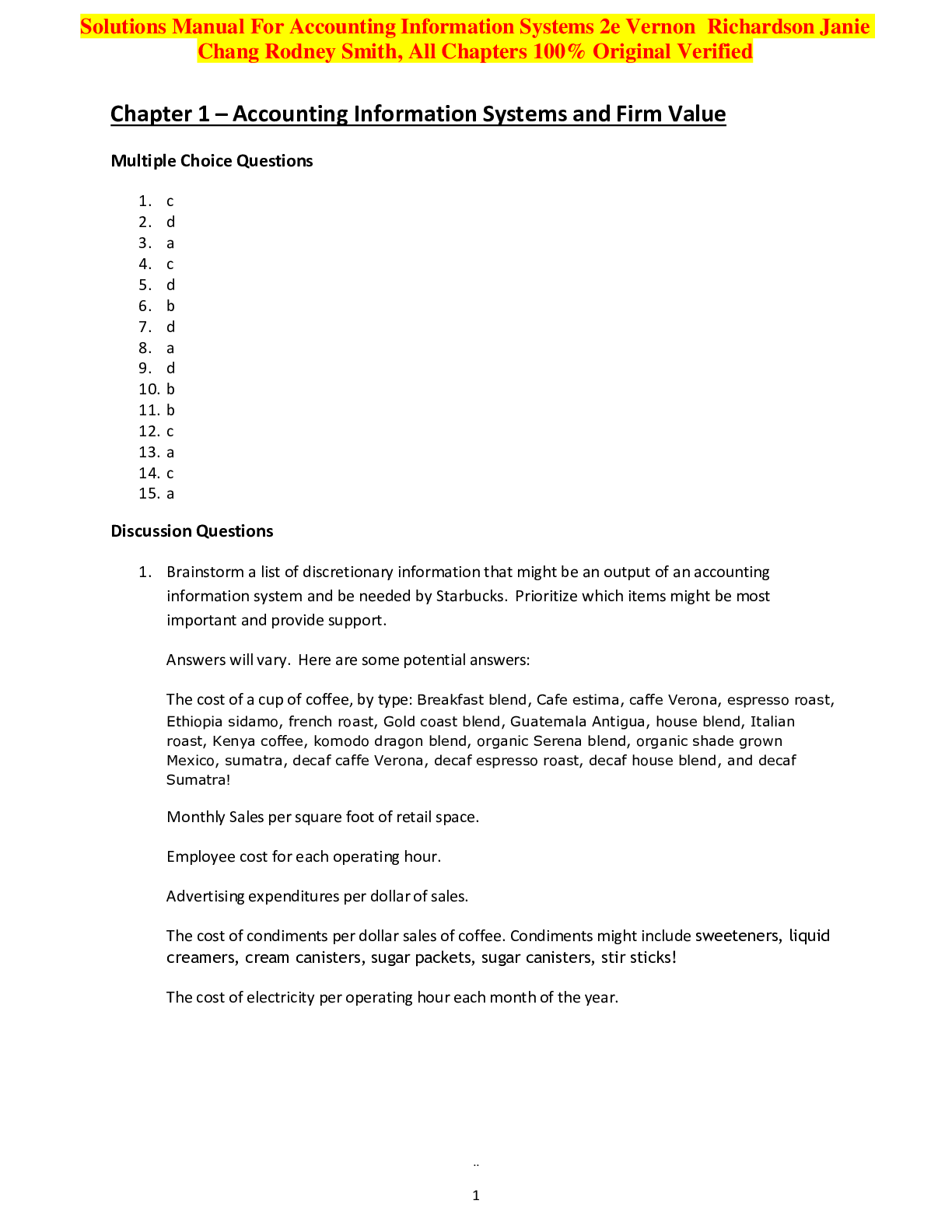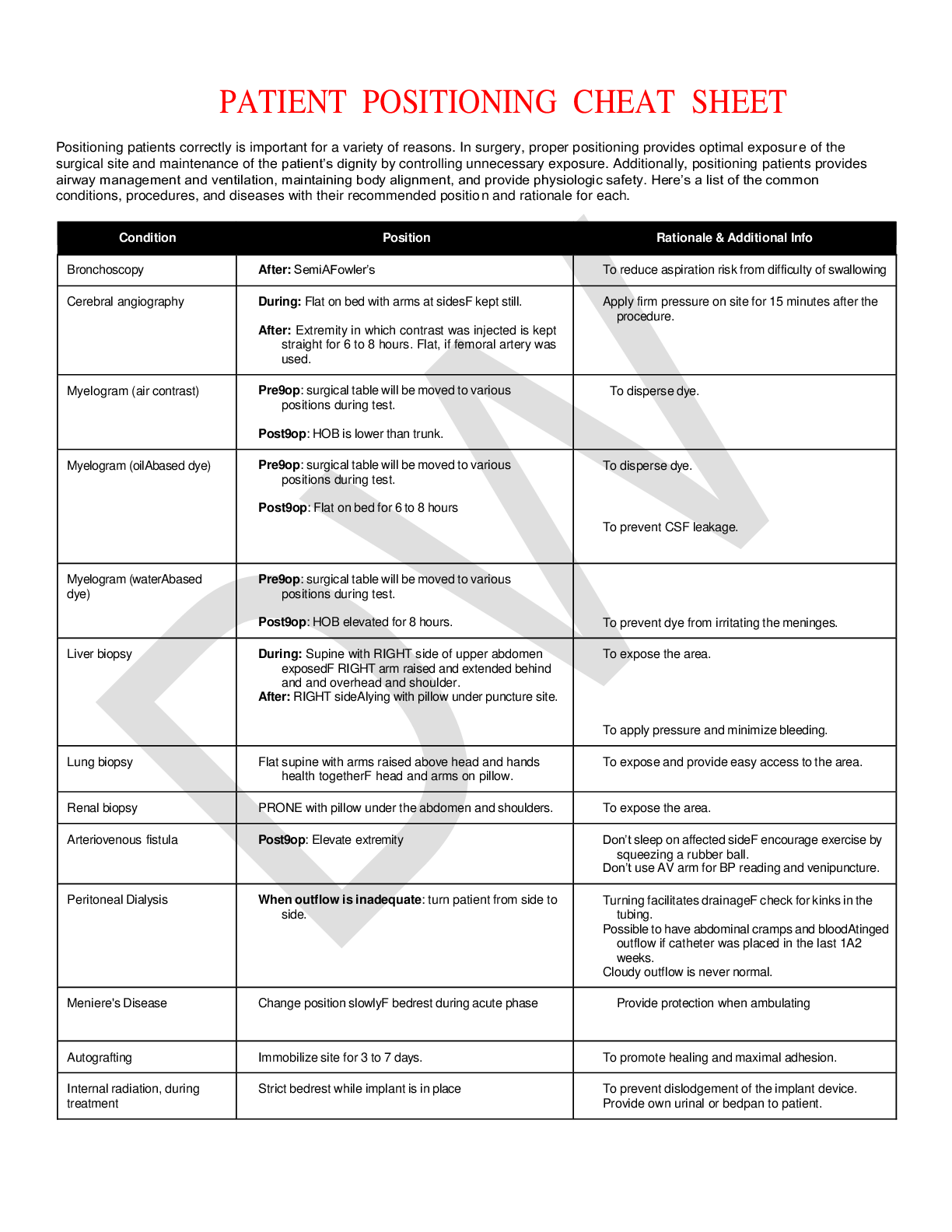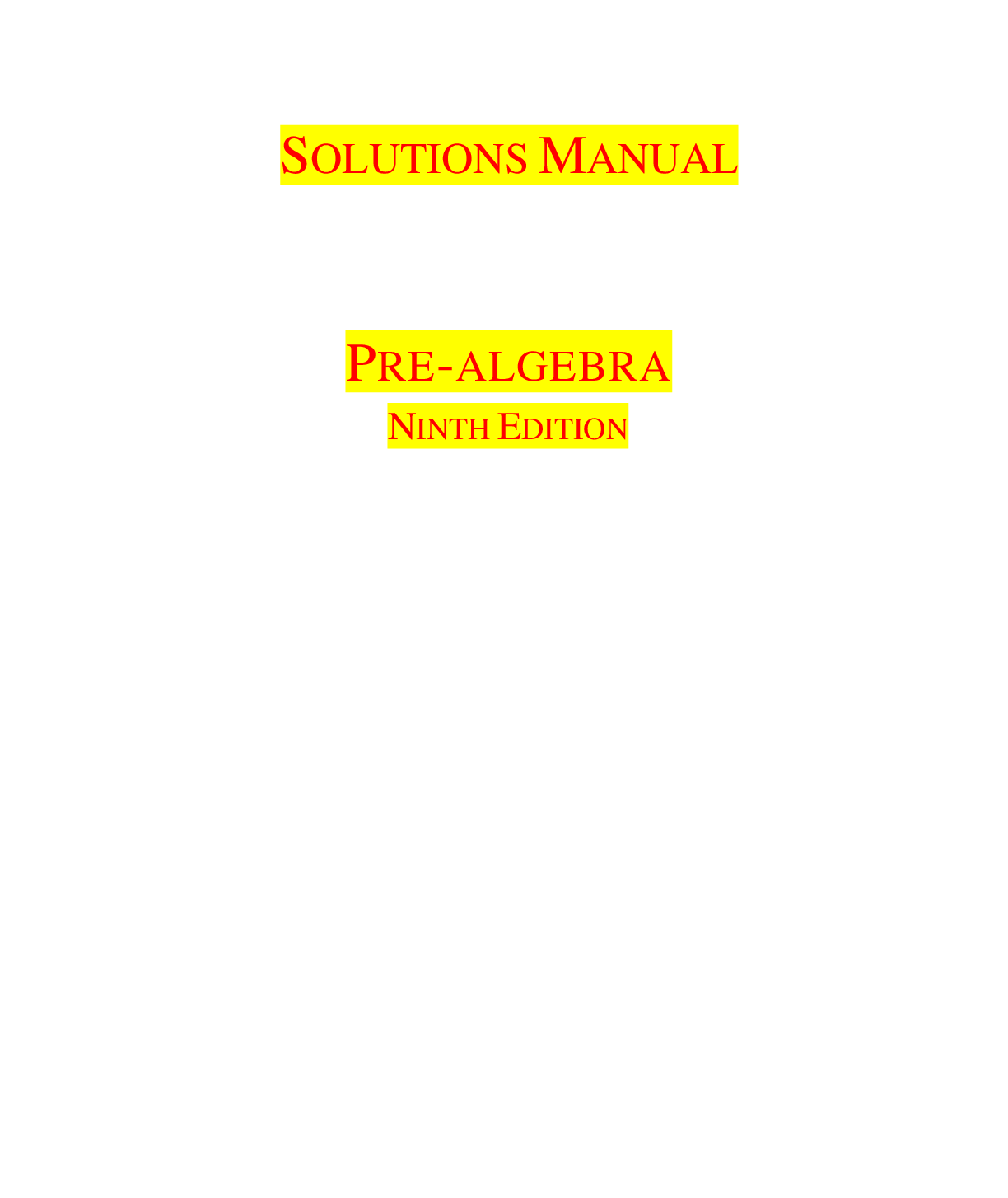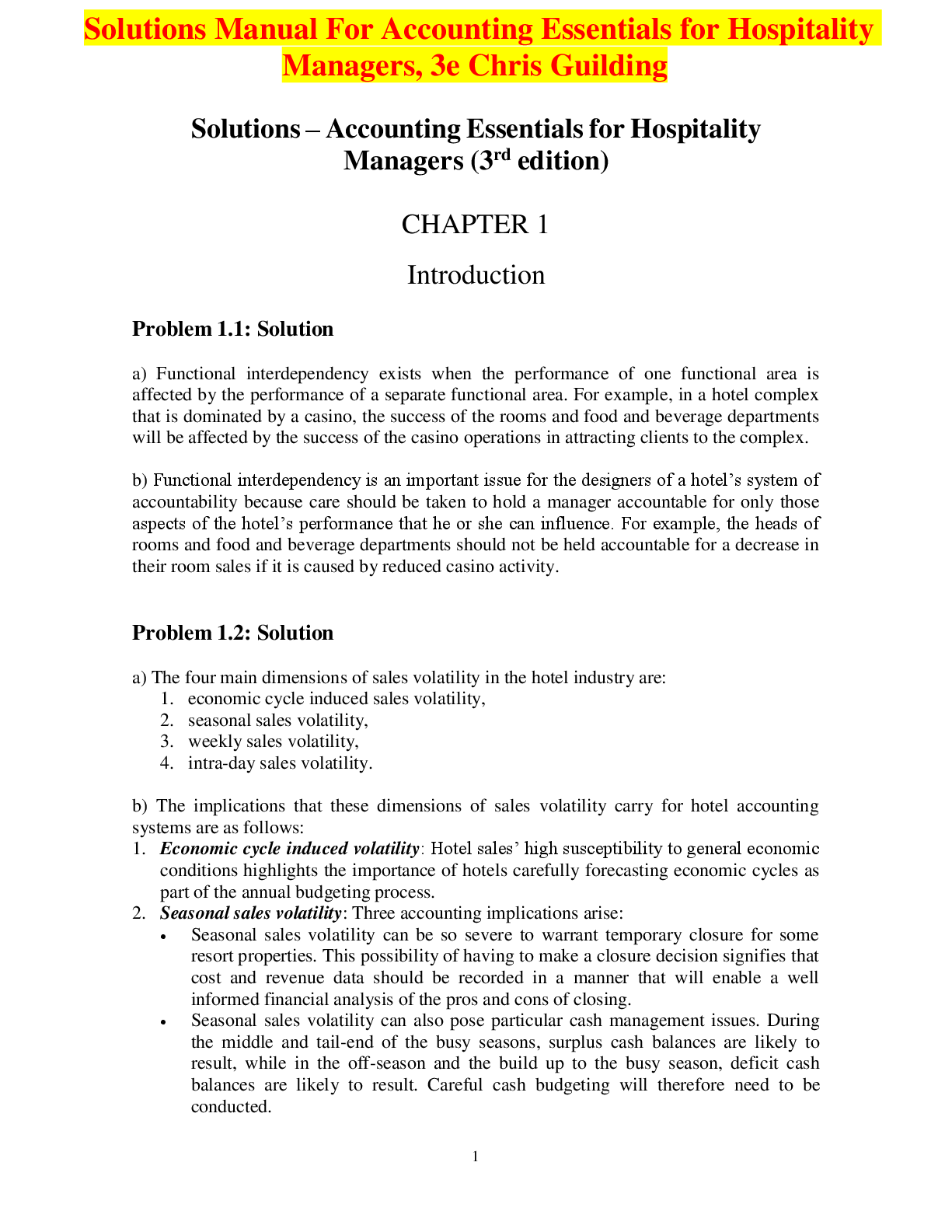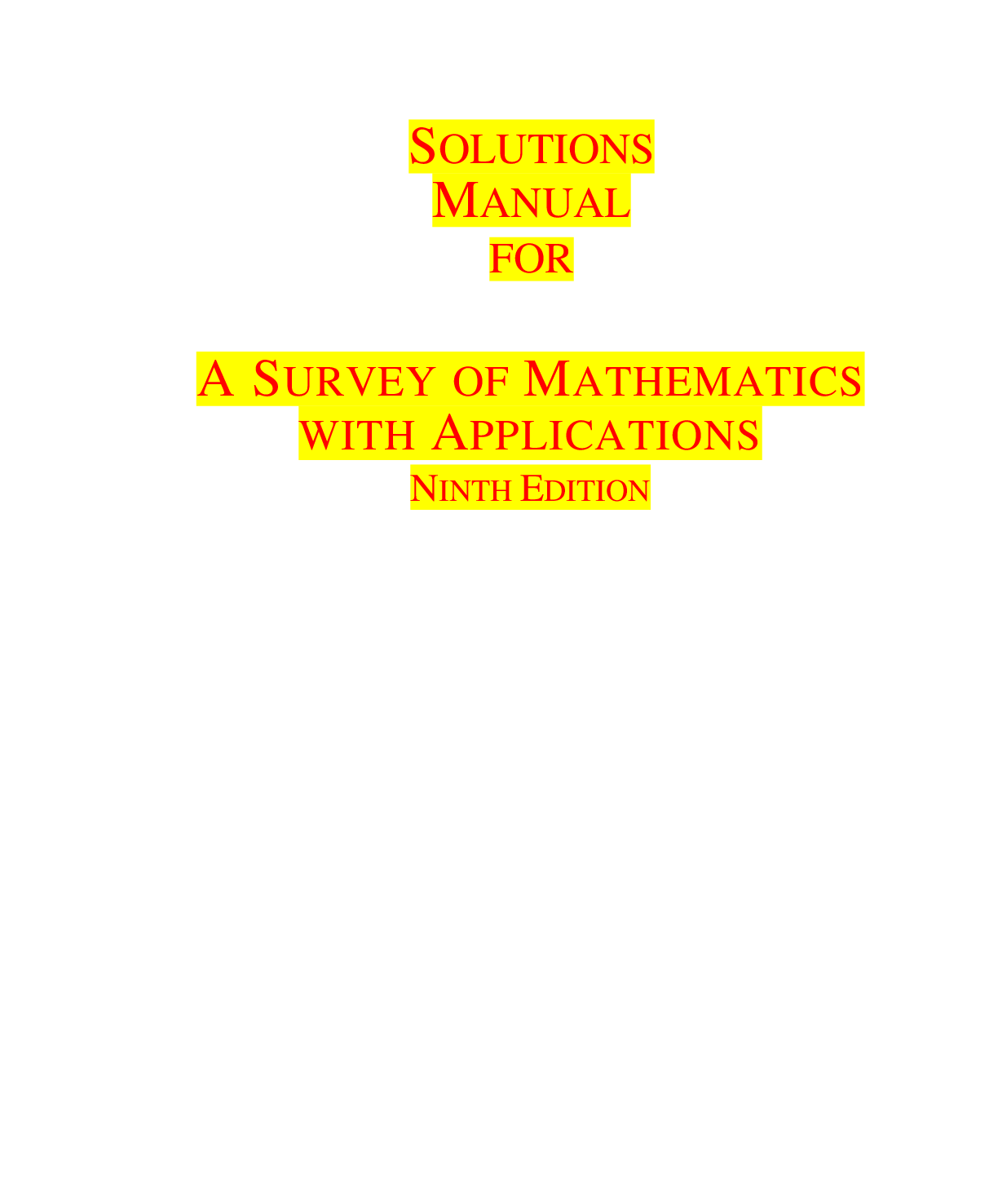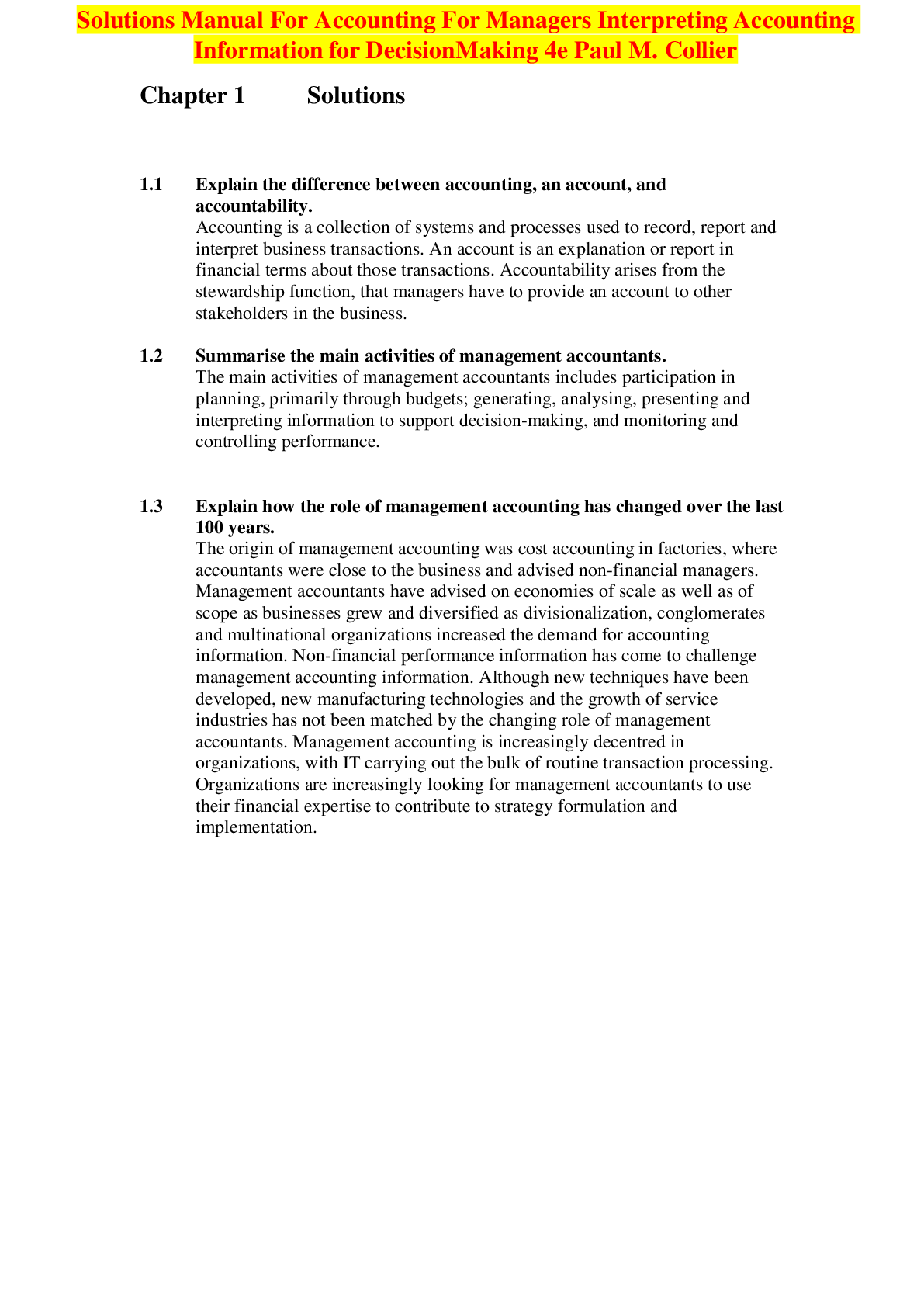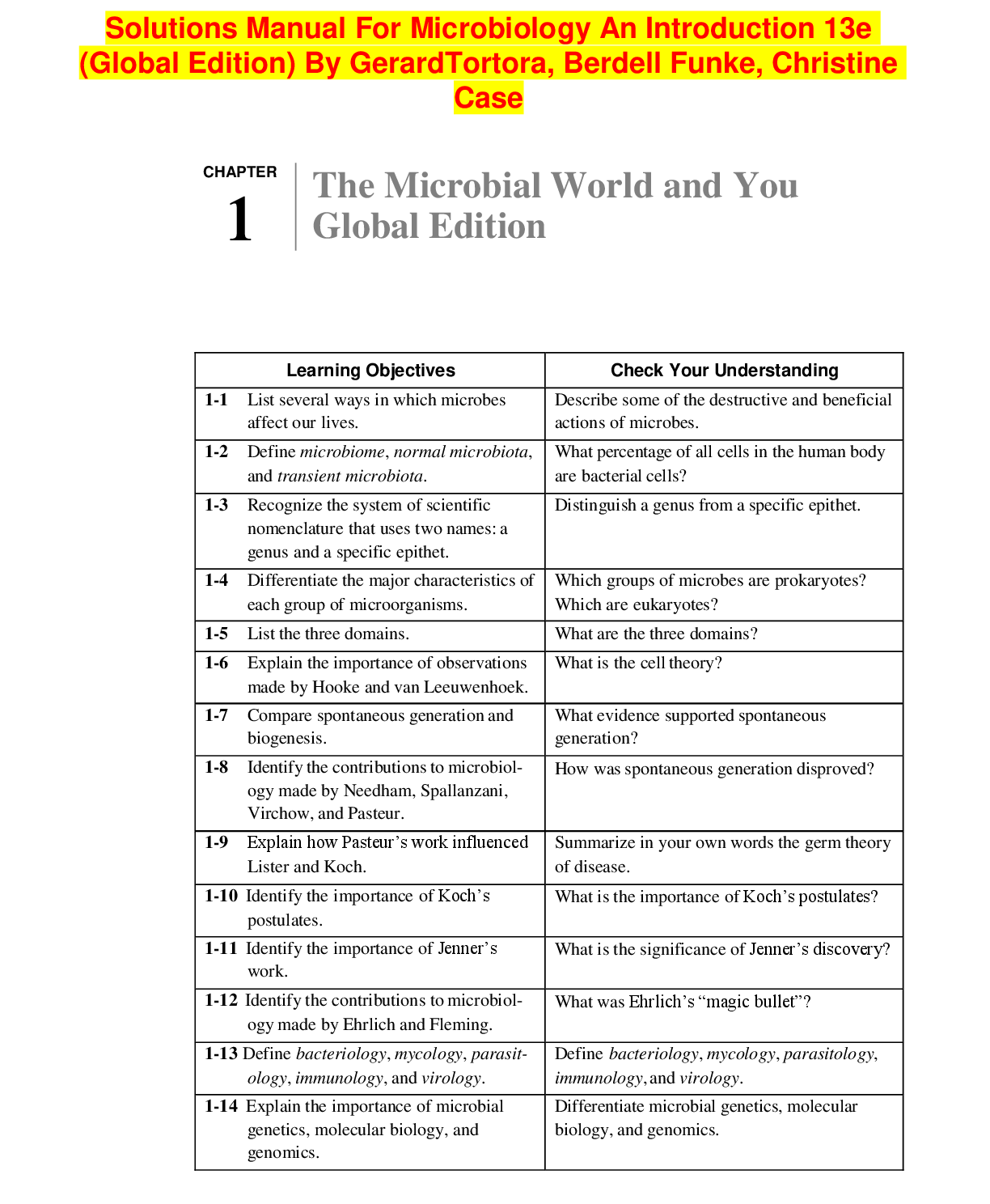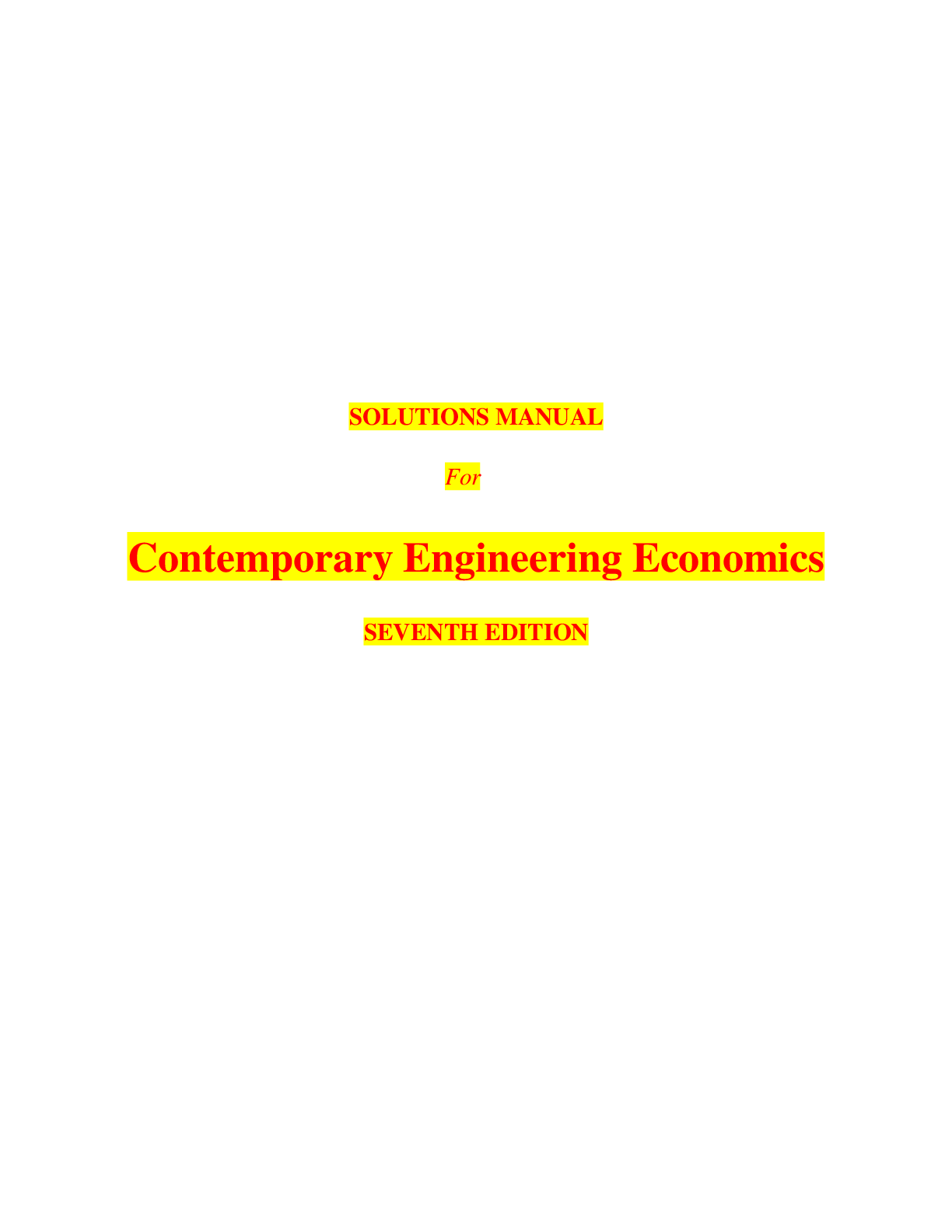Education > SOLUTIONS MANUAL > Solution Manual for Environmental Economics, An Introduction (All)
Solution Manual for Environmental Economics, An Introduction
Document Content and Description Below
Solution Manual for Environmental Economics, An Introduction-Environmental Economics, An Introduction is designed as a text for a onesemester course. It is based on courses we have taught for many yea... rs, courses predicated on the notion that the subject is interesting and important enough to be presented to a wide audience of lower-division students, rather than delayed until students have negotiated a set of prerequisite courses. Thus, the book is meant to be used by students who have not necessarily had any economics yet. Nevertheless, the book is intended to have a distinctly analytical perspective. Given these objectives, it’s necessary to focus on a limited number of primary concepts―incentives, efficiency, the equimarginal principle, cost-effectiveness, and so on. It’s also necessary, in the later chapters on domestic and international environmental policy, to concentrate on the main stories and avoid getting drawn into the endless details that these subjects contain. After the first two introductory chapters, there are three chapters on the most basic of economic principles. These are probably about the minimum for someone who has never had any economics. In writing these chapters, there was a continuing temptation to go for a slightly higher level of sophistication. We tried very hard to resist this, to keep clearly in mind the type of student for whom the book is primarily intended. We would hope that students who have had, say, introductory micro, would find these chapters a useful review. In this instructor’s manual, we have worked through each of the chapters, discussing (a) updates of subjects that are new to the chapter in this edition, (b) the objectives of each, (c) main ideas covered, (d) points of discussion (cautions, techniques we have found useful, possible extensions, etc.), and (e) brief answers to each of the questions for further discussion. The book is 21 chapters long, perhaps too long for students to get through completely under normal circumstances. The book is divided into sections so that different instructors can emphasize the material they find most useful. After having gone through Sections I and II, you may wish to pick and choose chapters from the other sections depending on the relative emphasis you wish to put on: (a) benefit–cost analysis, (b) policy analysis, (c) U.S. environmental policy, and (d) international issues. The questions at the end of the chapters are called ―discussion‖ questions, but they are perhaps more specific than this label implies. For the most part, they are not meant to lead to open-ended discussion but have answers that we hope are more or less correct. They are designed to lead students toward making modest extensions of the ideas covered, which should help them both review the material and perhaps think more deeply about it. The exhibits presented throughout the chapters are for the purpose of illustrating points in the text. The objective is to show students that the economic ideas we are discussing in the classroom are actually at work in the real world. Appendix A of acronyms and abbreviations is updated. We recommend highlighting this feature for students. A short, matching quiz of about 10 of the most used acronyms or abbreviations, like the EPA, helps plug students into the lingo of environmental economics [Show More]
Last updated: 2 months ago
Preview 5 out of 92 pages

Loading document previews ...
Buy this document to get the full access instantly
Instant Download Access after purchase
Buy NowInstant download
We Accept:

Reviews( 0 )
$13.50
Can't find what you want? Try our AI powered Search
Document information
Connected school, study & course
About the document
Uploaded On
Apr 07, 2025
Number of pages
92
Written in
Additional information
This document has been written for:
Uploaded
Apr 07, 2025
Downloads
0
Views
12


